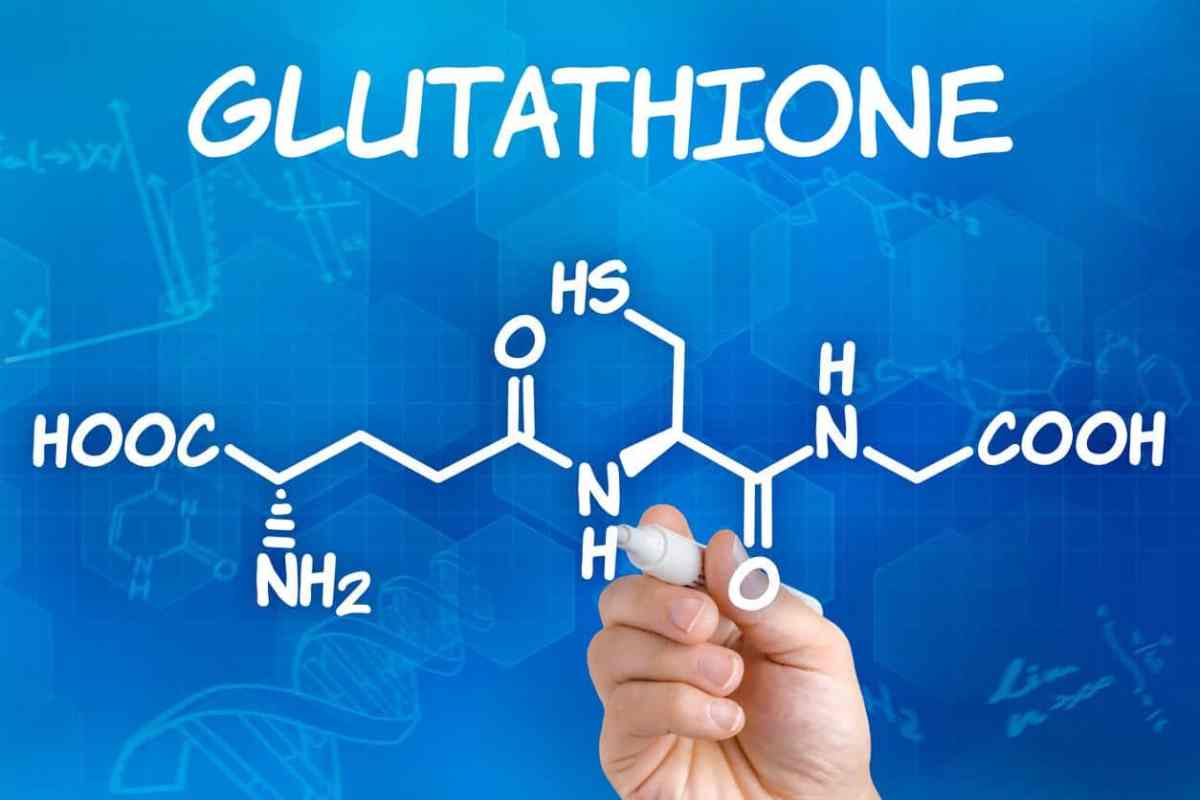
Long before NAC saved the life of someone dear to me, it was a staple of my supplement stack.I notice that now N-Acetyl Cysteine has become my favorite supplement, the one I reach for 3 or 4 times a day when I pass the kitchen cabinet.Its been such a gradual process, that I dont remember the reasons that installed NAC in my subconscious as a reliable life extension aid.
Im taking this opportunity to review the literature.In the 1980s and 1990s, the oxidative theory of aging reached its pinnacle, and anti-oxidant supplements were all the rage.Trials of anti-aging supplements failed time and again, and often they led to shorter lifespans of test animals.Aging of animals turns out to be more complicated than rusting of iron, and part of the complication is hormesis, and ROS (Reactive Oxygen Species), particularly H2O2, are part of the signaling cascade that turns on hormetic protections.One anti-oxidant that survived the massacre was glutathione.
I continue to believe that glutathione promotes health, despite its close association with H2O2.Supplementing with N-Acetyl Cysteine (NAC) is the commonly-recommended strategy for raising glutathione levels, and it seems to work.The best promise of NAC (through glutathione) is in preserving our mitochondria, which weaken and reduce in number as we age.ChemistryGlutathione is a tripeptide, a mini-protein consisting of the 3 amino acids glutamate, cysteine, and glycine.Our metabolisms (like all eukaryotes) use REDOX reactions to store and deploy energy, because they are far more energy-dense than the covalent chemistry of organic molecules.
The energy metabolism has waste products which must be neutralized so they dont latch on to delicate organic molecules and damage them.There are various toxic waste products (ROS), and various pathways for reducing them.The last stage is always H2O2, which must be neutralized to water.
This is the primary job of glutathione.(Also catalase.) Unlike catalase, glutathione can perform diverse other detoxifying roles as well.Glutathione acts like a rechargeable battery.Its reduced form (GSH) is available to detoxify H2O2, after which it exists as an oxidized form (GSSG), which must be recharged.
GSSG is just two molecules of glutathione that are linked together by a disulfide bond, and a more complex protein called glutathione reductase comes along to separate the two molecules, recharging the battery.Another supplement, Alpha Lipoic Acid (ALA) is also helpful in recycling GSSG back to its useful form, GSH.Cells sense the ratio of GSH to GSSG to determine if they are in trouble.
If the ratio becomes too low, the cell turns on NFkB [ref], which, in turn, initiates an inflammation cascade.A healthy cell has GSH:GSSG in the ratio 100 to 1, but a severely stressed sell can have more GSSG than GSH.Low ratios GSH:GSSG ratios can send a cell down a senescence pathway, terminating in apoptosis.Glutathiones importance is underscored by its large concentrations in every cell in the body.
Your average human cell is using glucose for fuel, but the cell has as much glutathione as glucose in the cytoplasm.Glutathione levels normally decline with age.In addition to anti-oxidant activity, glutathione is now known to have many other roles, including DNA repair, protein synthesis, and chemical signaling.These functions may be even more important than detoxifying H2O2.Most important for slowing age-related degeneration, glutathione has anti-inflammatory effects [ref], especially in the lungs [ref], which may be why NAC has been helpful in protecting against COVID [ref] It is well-established that severe COVID depletes glutathione, especially in late stages involving a cytokine storm [ref].Table 1 Functions of GlutathioneDirect chemical neutralization of singlet oxygen, hydroxyl radicals, and superoxide radicalsCofactor for several antioxidant enzymesRegeneration of vitamins C and ENeutralization of free radicals produced by Phase I liver metabolism of chemical toxinsOne of approximately 7 liver Phase II reactions, which conjugate the activated intermediates produced by Phase I to make them water soluble for excretion by the kidneysTransportation of mercury out of cells and the brainRegulation of cellular proliferation and apoptosisVital to mitochondrial function and maintenance of mitochondrial DNA (mtDNA)Table from J Pizzorno [2014]Dietary GlutathioneFruits and vegetables are a substantial source of dietary glutathione [ref], but bioavailability is low, so most of the bodys glutathione is home-made.Can you just take glutathione pills? Yes, but they are expensive and poorly absorbed.
Does supplementation with NAC really increase availability of glutathione where it is useful? Evidence is good [ref, ref, ref].Just two years ago, I advised readers of this blog to eat glutathione, but Im backing off from that suggestion now, because I think NAC supplementation is not just cheaper but more effective.The rate-limiting step of glutathione synthesis does not appear to be the activity of either enzyme under normal conditions, but rather the provision of one of the amino acids (L-cysteine) making up the tripeptide.[ref]Agricultural and industrial chemicals, ubiquitous in our environment, are not the primary cause of aging, but they cause severe symptoms for some, and may be degrading the metabolisms for all of us in subtle ways.
Glyphosate has become impossible to avoid.Glyphosate, mercury, and other chemicals increase the bodys need for glutathione, as glutathione is essential to the bodys detox machinery.IBS, Crohns disease, and other inflammation syndromes increase the need for glutathione, and can potentially benefit from NAC supplementation.What benefits of NAC have been documented in humans?Best evidence is for preservation of the eyes with age.
This is from an article on eye health and aging by BIll Sardi:Numerous studies link glutathione with the prevention of cataracts, glaucoma, retinal disease and diabetic blindness.Here is a sampling of the evidence concerning glutathione and eye health.Glutathione has been shown to detoxify the aqueous fluid of the inner eye [ref] and may help maintain adequate fluid outflow among glaucoma patients.[ref, ref]Glutathione exists in unusually high concentrations in the lens and is essential to maintain its transparency.
[ref] However, glutathione levels decline in the lens with advancing age; the decline is especially rapid prior to cataract formation.[ref]NAC has been observed to have neuroprotective properties, but whether it lowers risk of dementia or PD is still not established [ref].Emerging evidence suggests that NAC supplementation protects the brain in the event of ischemic stroke [ref].
Intravenous glutathione has been tried as a therapy for Parkinsons disease with unimpressive results.Psychiatric applications are still under development.NAC has shown promise for treating addiction, AD, PD, autism, OCD, schizophrenia, depression, and bipolar disorder [ref].Infusion of NAC increased endurance in trained cyclists [ref].Intravenous NAC is used in ERs for detoxification of acetaminophen.
It is also used for heavy metals [ref, ref], chloroform, monoxide and other poisons.[ref]Table 2Diseases Associated with GSH DepletionNeurodegenerative disorders (Alzheimers, Parkinsons, and Huntingtons diseases, amyotrophic lateral sclerosis, Friedreichs ataxia)Pulmonary disease (COPD, asthma, and acute respiratory distress syndrome)Immune diseases (HIV, autoimmune disease)Cardiovascular diseases (hypertension, myocardial infarction, cholesterol oxidation)Chronic age-related diseases (cataracts, macular degeneration, hearing impairment, and glaucoma)Liver diseaseCystic fibrosisAging process itselfTable from J Pizzorno [2014]Old mice have half as much glutathione in their muscles, compared to young mice [ref]Life extension in lab animals, including rodentsThere are many studies in worms and flies demonstrating life extension via NAC.There is just one study in mice [ref], but it was so successful that I dont know why it hasnt been replicated.
24% increase in mean lifespan and 45% increase in maximal lifespan in the only arm of this Jackson Lab broad screening study that showed promise.FDA regulationGlutathione and NAC have both been readily available supplements, available without prescription for many years.NAC is preferred as a less expensive pathway to augmenting GSH levels within cells.Recently, NAC was reclassified as a prescription drug by FDA.
There is no concern with safety, and the only reason offered by FDA is that NAC has been promoted as a hangover remedy after excess alcohol consumption.Since glutathione can detoxify alcohol breakdown products in the liver, NAC probably has some usefulness in this role.I believe the real motivation for making NAC harder to get is that it is useful in treating COVID, and there appears to be an agenda for suppressing inexpensive and effective treatments (chloroquine, ivermectin, vitamin D, zinc, quercetin) in favor of vaccination.(Off-topic: If youre interested in a comprehensive guide to the general principles and the subtleties treating COVID, I highly recommend this interview by Dr Darrell Demeo of Mumbai.)The Bottom LineThe evidence for NAC as a life extension supplement is mostly indirect, but there are many good reasons to boost our glutathione levels, especially as we age, and especially in an age of ubiquitous chemical toxins.
Disclaimer: This story is auto-aggregated by a computer program and has not been created or edited by Senior Savings Deals.
Publisher: Josh Mitteldorf ( Read More )
Publisher: Josh Mitteldorf ( Read More )

